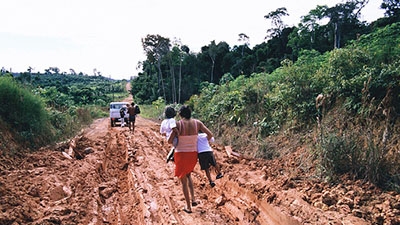We know we must adapt to rising global temperatures, regardless of whether countries manage to cap greenhouse gas emissions. We also know that the 1.3 billion people who still live in extreme poverty are most vulnerable to climate change.
So what if we turn the equation around and use poverty reduction as a climate adaptation tool?
A new book by World Bank economists argues that by taking action on poverty reduction today, countries will go a long way toward adapting to the impacts of climate change. Indeed, rather than waiting for global agreements on emissions and adaptation measures, resolute action to reduce poverty here and now would, as they say, kill two birds with one stone.
Titled The Poverty and Welfare Impacts of Climate Change, the book offers evidence of how climatic shocks such as drought or severe rainfall affect the welfare of households in local communities.
Emmanuel Skoufias, lead economist with the Bank’s Poverty Reduction & Equity department and editor of the book, explains what makes its findings important at this particular time.
What message do you want readers to take away from this book?
Climate change discussions easily become political, making it difficult to reach results. On the one hand, the developing world may say, ‘You started to pollute the world 100 years ago to have growth. Now it’s our turn to grow our economy.’ Some rich countries, on the other hand, are reluctant to make sacrifices needed to cut emissions.
And when climate negotiations bog down, measures and funding needed to help vulnerable populations adapt are harder to come by.
So another way of getting action is to say, ‘Look, we can double up our efforts to reduce poverty and that will also be one of the best things we can do to help people adapt to the climate impacts we know are coming.'
The book draws attention to the role policymakers play in sustaining public programs that help poor households cope with the negative impacts of climate change, and it emphasizes the need to align climate-change adaptation strategies with development objectives and poverty-reduction strategies.
The link between poverty and climate change has been part of the debate for quite some time. What makes this book different?
Our department’s work focuses on poverty and redistribution programs. It’s very evidence-driven. When we looked at the poverty impacts of climate change literature, we noticed there were a lot of rhetoric arguments, but very little evidence to base those arguments on.
Studies looking at how climate change affects the poor examine how a whole country would be affected, or how the country gross domestic product would fare. They give a very broad picture without a lot of nuances.
Instead we used data that lets us concentrate on smaller geographic areas. It means that we can talk about this region versus that region within a country. We can even drill down to the household level. That’s the benefit we get.
We don’t try to predict what will happen in the future, but we get some sense of what will happen in smaller geographic areas.
What new evidence does the book provide?
In the Mexico study that is part of our book, we looked at the historic effect of too much or too little rainfall, and found that it translated into a lower height for children. It’s well-known that stunted growth in children translates into fewer opportunities, lower achievements and lower returns in the labor markets.
But we also show that while climate change will have an impact, it’s very hard to generalize. Some areas will be affected differently, even among the poor. It depends on which kind of measure of welfare you use, which indicators you use. There are a lot of nuances. So far in the climate change literature there is not much quantitative evidence highlighting the diversity of impacts.
We also show that there is a lot policymakers can do to help the poor adapt and cope with climate change, such as implementing well-targeted and scaled safety nets.
Broad and sustained poverty reduction, however, will be one of the biggest and most important adaption tools – and for many obvious reasons.
If you have assets, for example, you can use them as collateral to get credit and protect yourself against the effects of climate change. Access to insurance, roads, cellular phones, communications and other services will help people make day-to-day decisions to plan for extreme weather events. These are just a few examples of how reduced poverty and greater wealth make people less vulnerable.
Fortunately, many of the policies that will help us reduce the impacts of climate change on poverty are also sound, overall strategies for reducing poverty and promoting economic growth. That’s why this is a win-win.
Listen to Skoufias discuss his book with Georges Collinet in this podcast.

